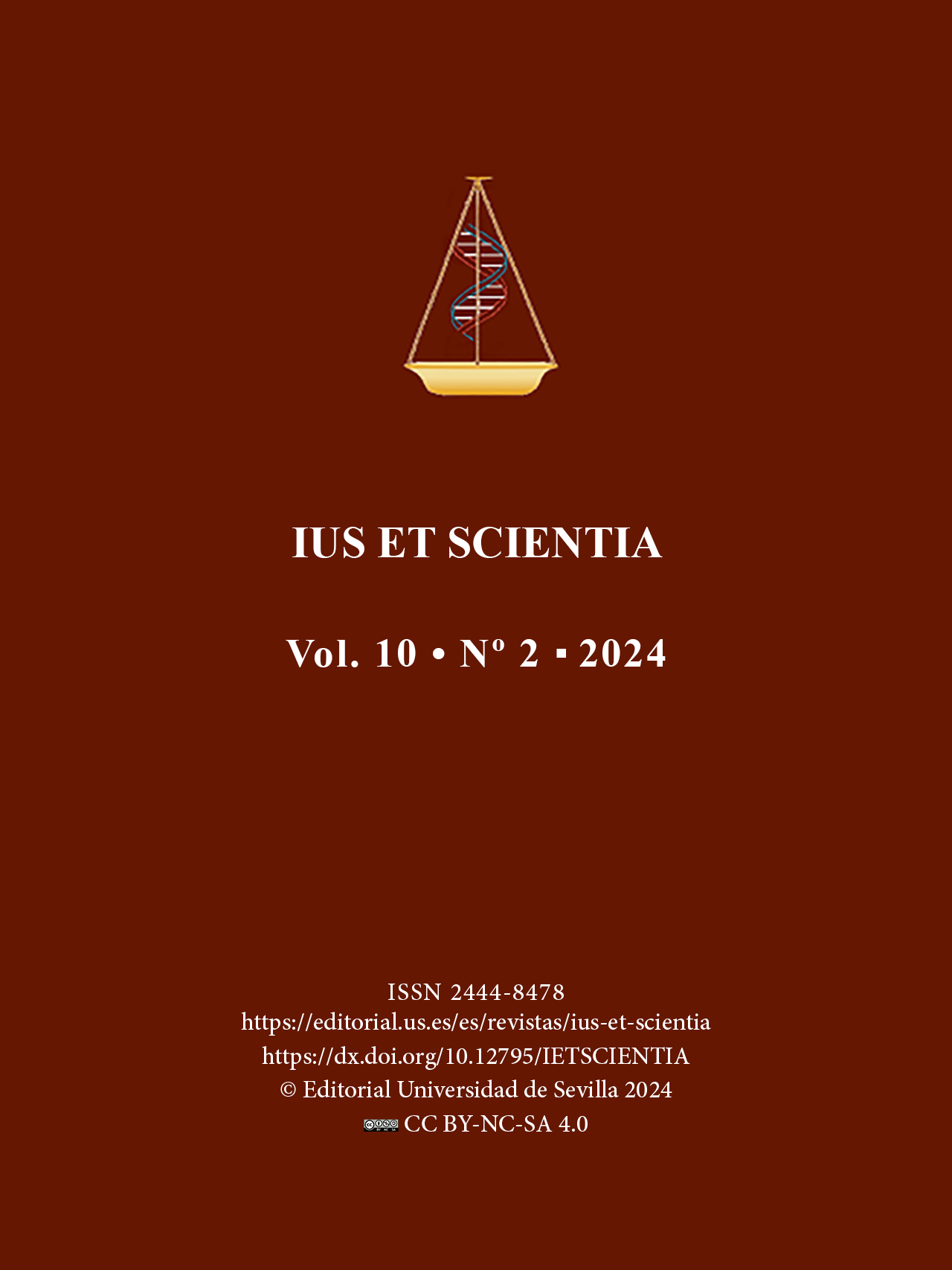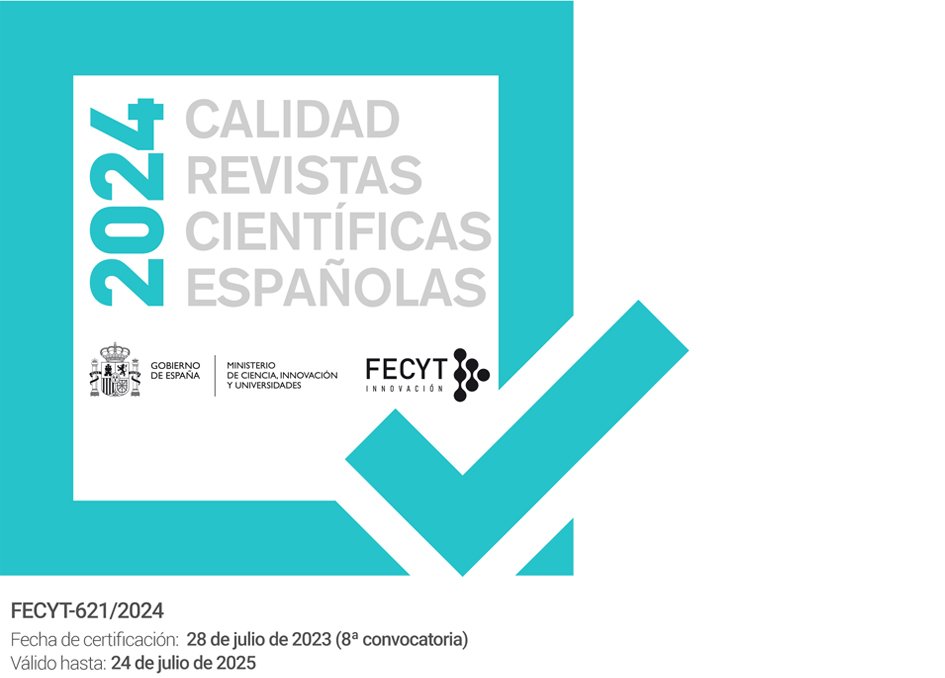The Cusp of Non-Human Neurorights: a Bioethical Reflection about the Existential Dichotomy Between Humanoid Robot and Robotic Human
DOI:
https://doi.org/10.12795/IESTSCIENTIA.2024.i02.08Keywords:
Neurorights, Cyber rights, Cyborg, Autopoiesis, Artificial intelligence, Ghost in the machine, TranshumanismAbstract
The purpose of this paper is to analyze from three dimensions the rights for human beings, in contrast to the rights for machines: 1) natural intelligence versus artificial intelligence; 2) the intellective aspect (sense) of the knowledge and the emotional aspect (sensibility) of the knowledge; and 3) the cybernetic corporality of androids, with respect to the organic corporality of human beings (including, of course, cyborgs). The delimitation implies questioning to what extent it’s plausible to predicate rights or, in another sense, cyber rights to the machine, on the basis that it has a reason equivalent to or superior to that of the human being.
Downloads
References
Alegría, P. J. (2017). Transhumanismo. Un debate filosófico. Revista de filosofía, (75), 47-61. http://dx.doi.org/10.15359/praxis.75.3
Ardila, R. (2014). Filogénesis y ontogénesis de la moral. Revista de la Academia Colombiana de Ciencias Exactas, Físicas y Naturales, 38: 205-215. https://doi.org/10.18257/raccefyn.164
Chalmers, D. (1999). La mente consciente. En busca de una teoría fundamental. Gedisa.
Chalmers, D. (2014). Uploading: A Philosophical Analysis. En R. Blackford y D. Broderick (Eds.), Intelligence Unbound. The Future of Uploaded and Machine Minds (pp. 102-130). Malden: Wiley Blackwell.
Churchland, P. (2012). El cerebro moral. Lo que la neurociencia nos cuenta sobre la moralidad. Paidós.
Clark, A. y Chalmers, D. (1998). The extended mind. Analysis, 58(1):7-19.
Clark, A. (2003). Natural Born Cyborg, Oxford University Press.
Damasio, A. (1996). El error de Descartes. La razón de las emociones. Editorial Andrés Bello.
Damasio, A. (2006). En busca de Spinoza. Neurobiología de la emoción y los sentimientos. Crítica.
Damasio, A. (2010). Y el cerebro creó al hombre. ¿Cómo pudo el cerebro generar emociones, sentimientos, ideas y el yo? Ediciones Destino.
Dennet, D. (1998). La actitud intencional. Gedisa.
Donaldson, S. y Kymlicka, W. (2011). Zoopolis, una revolución animalista. Errata Naturae.
Díaz-Navarro, D. E. (2023). Axiología sistémica: cibernética, semiótica y neuroética del valor. Revista Colombiana de Filosofía de la Ciencia, 23(46), 123–164. https://doi.org/10.18270/rcfc.v23i46.3982
Foerster, H. (1998). Por una nueva epistemología. Metapolítica, 2(8), 629-641.
Foerster, H. (2003). Understanding Understanding. Essays on cybernetics and cognition. New York: Springer.
Hawkins, J. y Blakeslee, S. (2005). Sobre la inteligencia. Espasa-Calpe.
Ienca, M. y Andorno, R. (2017). A new category of human rights: neurorights. Research in Progress. https://blogs.biomedcentral.com/bmcblog/2017/04/26/new-category-human-rights-neurorights/
Ienca, M. (2021). On neurorights. Frontiers in Human Neuroscience. 15: 701258. https://doi.org/10.3389/fnhum.2021.701258
Juan, G. (2020). Inteligencia Artificial y Filosofía del Bioderecho: una tesis crítica y una propuesta ética. Ius et Scientia, 6(2), 96-110. https://hdl.handle.net/11441/111538
Kurzweil, R. (2013). Cómo crear una mente. Lola Books.
Maturana, H. y Varela, F. (1994). De máquinas y seres vivos: autopoiesis, la organización de lo vivo. Editorial Universitaria.
Milkowski, M. (2013). Explaining the Computational Mind. MIT Press.
Molina Roa, J. A. (2014). Derechos de la naturaleza: historia y tendencias actuales. Universidad Externado.
Molina Roa, J. A. (2018). Los derechos de los animales: de la cosificación a la zoopolítica. Universidad Externado.
Pinker, S. (2018). En defensa de la ilustración. Por la razón, la ciencia, el humanismo y el progreso. Paidós.
Richards, R. (2009). «Darwin on mind, morals and emotions». En J. Hodge y G. Radick (Eds.), The Cambridge Companion to Darwin. (pp. 96-119). Cambridge University Press.
Ryle, G. (2009). The concept of mind. London: Routledge. https://doi.org/10.4324/9780203875858
Salardi, S. (2020). Robótica e inteligencia artificial: retos para el derecho. Derechos y Libertades, 42. https://doi.org/10.14679/1158
Torres Vásquez, H. y Díaz-Navarro, D. E. (2024). Deontología y axiología de la cognición moral: los fundamentos éticos de la norma jurídica. Derecho Global. Estudios sobre Derecho y Justicia, 9(26): 319-347. https://doi.org/10.32870/dgedj.v9i26.723
Varela, F., Thompson, E. y Rosch, E. (1997). De cuerpo presente. Las ciencias cognitivas y la experiencia humana. Gedisa.
Wilson, A. y Golonka, S. (2013). Embodied cognition is not what you think it is. Frontiers.
Downloads
Published
How to Cite
Issue
Section
License
Copyright (c) 2024 David Ernesto Diaz Navarro

This work is licensed under a Creative Commons Attribution-NonCommercial-ShareAlike 4.0 International License.
Those authors being published in this journal agree to the following terms:
- Authors retain their copyright and they will guarantee to the journal the right of first publication of their work, which will be simultaneously subject to license recognition by Creative Commons that allows others to share such work provided it is stated the author’s name and his first publishing in IUS ET SCIENTIA.
- Authors may take other non-exclusive distribution license agreements version of the published work (e.g. deposit in an institutional digital file or publish it in a monographic volume) provided it is stated the initial publication in this journal.
- It is allowed and encouraged that Author s disseminate their work via the Internet (e. g. institutional digital files or on their website) prior to and during the submission process, which can lead to interesting exchanges and to increase citation of the published work.
- Abstract 14
- PDF (Español (España)) 8





